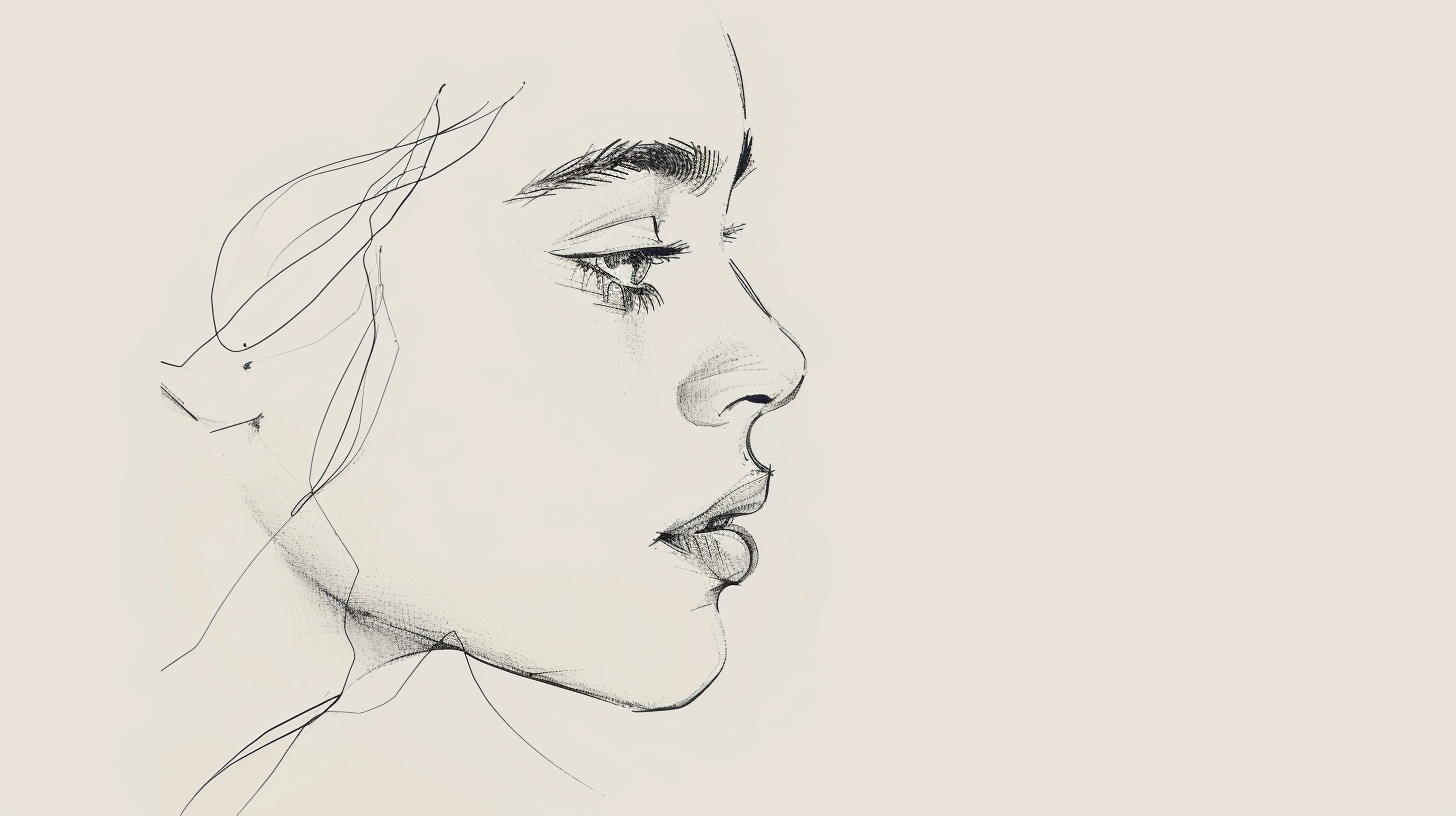Portrait art, traditionally known for its detail and lifelike representation, has taken on new meaning in the minimalist era. As an artist, there is a deep satisfaction in stripping away the excess, leaving only the raw emotion and essence of a subject. Minimalist portraiture challenges us to ask: How much can we remove before the soul of the subject fades? Yet, as I’ve found, the less you have on the canvas, the more room there is for interpretation and connection. In this article, we’ll explore how minimalism is revolutionizing portrait art and how this trend can shape the aesthetics of your interior spaces.
Minimalist Portraits: The Power of Less
Minimalism thrives on the belief that less is more. In portrait art, this approach uses a pared-back palette, simple lines, and restrained details. What remains is the bare emotion and character of the subject. In our hectic world, where we are bombarded with sensory overload, the quiet presence of minimalist art can be a refreshing pause—a moment to reflect. When I create minimalist portraits, I aim to capture not just a face, but the feeling behind it. A single brushstroke can suggest a smile, a frown, or a deep moment of contemplation.
Minimalist portraits are like windows into the soul, and for home interiors, they offer a peaceful yet profound addition. A minimalist portrait, perhaps featuring only the outline of a face or a few key features, can evoke powerful emotions in a room without overwhelming the viewer.
Emotional Impact of Minimalist Portrait Art in Interiors
From my experience, minimalist portrait art doesn’t just complement an interior; it shapes its emotional landscape. In a living room, a portrait that uses only stark black lines and white space can create a serene, almost meditative atmosphere. It’s fascinating to see how different minimalist portraits, with their varying levels of abstraction, influence the mood of a room.
Imagine a dining space adorned with a simple, expressionistic face—half-drawn, half-imagined. The simplicity of the lines invites the viewer to complete the image in their mind, fostering a sense of engagement and connection. In my own projects, I’ve seen how these pieces stir conversation and evoke personal interpretations, making them unique to each viewer.
Choosing the Right Portrait for Your Space
When selecting minimalist portrait art for your home, it’s essential to consider the emotional tone you want to set. Portraits with softer, curved lines create a calming effect, perfect for bedrooms or meditation spaces. On the other hand, sharp, angular designs can add an edge to more vibrant or modern areas like a kitchen or a home office. I always advise my clients to think about what the face in the portrait says to them—is it introspective? Playful? Mysterious? Each piece of minimalist portrait art tells its own story, subtly influencing the mood of the space it occupies.
The Art of Restraint in Color Choices
In minimalist portraiture, the restraint isn’t only in line and form but also in color. I often find that a monochromatic palette allows the viewer to focus entirely on the subject’s expression and emotion. The absence of bright colors doesn’t mean a lack of depth. Rather, it’s an invitation to dive deeper into the subtleties of the art. Sometimes, a single accent color—perhaps a muted shade of blue or a soft blush on the cheeks—can transform the entire emotional impact of a piece.
For interior spaces, monochromatic portraits can be paired beautifully with similarly restrained decor, like neutral-toned furniture or raw materials like wood and concrete. This balance ensures that the portrait remains a focal point, while the overall aesthetic feels cohesive and intentional.
Minimalism as a Reflection of Modern Life
Minimalist portraiture reflects our desire for clarity and focus in an increasingly complex world. It’s a return to basics—a focus on human emotion without the distractions of the outer world. As an artist, I believe that creating minimalist portraits is an act of intentionality. Each line, each blank space, holds meaning. It’s a visual practice of mindfulness, both for the artist and the viewer.
In interior design, incorporating minimalist portrait art speaks to the desire for spaces that feel purposeful and free from clutter. These portraits are more than just decorative elements; they are statements of values—simplicity, focus, and emotional depth.
CABIN ART’s Approach to Minimalist Portraiture
At CABIN ART, our approach to minimalist portrait art is rooted in capturing the core essence of human expression. We believe in the power of simplicity to tell profound stories. Our designs are meticulously curated to evoke a sense of calm and introspection, offering a unique visual experience that resonates with modern lifestyles. We carefully craft each piece to blend seamlessly with contemporary interiors, allowing the art to speak softly but powerfully.
Our design philosophy emphasizes the harmony between art and space. By focusing on minimalist techniques, we ensure that every portrait we create serves as a reflection of both the subject and the environment in which it’s placed. Our goal is to provide art that doesn’t just hang on a wall but becomes part of the emotional fabric of the home.
Bringing Minimalist Portraits into Your Home
Minimalist portraiture, with its focus on emotion and simplicity, is an ideal addition to contemporary interior spaces. Whether you are looking to make a bold statement in your living room or create a quiet sanctuary in your bedroom, minimalist art offers the versatility to do both.
Remember, it’s not about the quantity of detail, but the quality of what remains. Each line, each space is intentional, reflecting the modern desire for clarity and meaning. CABIN ART’s commitment to minimalist portraiture allows us to offer art pieces that speak to the heart of this trend, helping you transform your home into a place of reflection, emotion, and timeless beauty.



